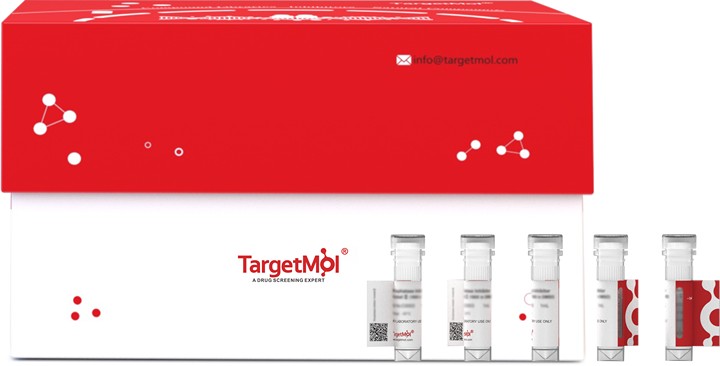购物车
全部删除  您的购物车当前为空
您的购物车当前为空
FGL1 Protein, Human, Recombinant (hFc) is expressed in HEK293 Cells. The accession number is Q08830.

| 规格 | 价格 | 库存 | 数量 |
|---|---|---|---|
| 5 μg | ¥ 433 | 6-8日内发货 | |
| 10 μg | ¥ 686 | 6-8日内发货 | |
| 20 μg | ¥ 1,150 | 5日内发货 | |
| 50 μg | ¥ 2,280 | 5日内发货 | |
| 100 μg | ¥ 3,160 | 5日内发货 | |
| 200 μg | ¥ 5,620 | 5日内发货 | |
| 500 μg | ¥ 11,800 | 5日内发货 | |
| 1 mg | ¥ 21,600 | 5日内发货 |
| 生物活性 | Immobilized h_LAG3 at 5.0 μg/ml (100 μl/well) can bind FGL1, hFc, Human with a linear range of 0.097–50 μg/ml when detected by Mouse Anti-Human IgG Fc-HRP. |
| 产品描述 | FGL1 Protein, Human, Recombinant (hFc) is expressed in HEK293 Cells. The accession number is Q08830. |
| 种属 | Human |
| 表达系统 | HEK293 Cells |
| 标签 | hFc |
| 蛋白编号 | Q08830 |
| 别名 | LFIRE-1,HPS,HP-041,HFREP-1 |
| 蛋白构建 | Leu23-Ile312 |
| 蛋白纯度 | > 95% as determined by SDS-PAGE |
| 分子量 | ~61.8 kDa (Reducing conditions) |
| 内毒素 | < 1 EU/μg of protein as determined by the LAL method. |
| 缓冲液 | Lyophilized from a 0.2 μm filtered solution in PBS. |
| 复溶方法 | Reconstitute the lyophilized protein in sterile deionized water. The product concentration should not be less than 100 μg/ml. Before opening, centrifuge the tube to collect powder at the bottom. After adding the reconstitution buffer, avoid vortexing or pipetting for mixing. |
| 存储 | Upon receiving, this product remains stable for up to 6 months at lower than -70°C. Upon reconstitution, the product should be stable for up to 1 week at 4°C or up to 3 months at -20°C. For long term storage it is recommended that a carrier protein (example 0.1% BSA) be added. Avoid repeated freeze-thaw cycles. |
| 运输方式 | In general, Lyophilized powders are shipping with blue ice. Solutions are shipping with dry ice. |
| 研究背景 | FGL1 (Fibrinogen-like protein 1), also known as hepatocyte-derived fibrinogen-related protein 1 (HFREP-1), HP-041, hepassocin (HPS), and liver fibrinogen-related protein 1 (LFIRE-1), is a liver-specific secreted protein belonging to the fibrinogen superfamily whose members share a fibrinogen domain at their C-termini. FGL1 is an immune suppressive molecule that inhibits the activation of antigen-specific T cells by acting as a major ligand of LAG3, and binds LAG3 independently of MHC class II. |